-
When you click on links to various merchants on this site and make a purchase, this can result in this site earning a commission. Affiliate programs and affiliations include, but are not limited to, the eBay Partner Network.
-
Posts
17,367 -
Joined
-
Last visited
-
Days Won
4
Content Type
Profiles
Forums
NGC Journals
Gallery
Events
Store
Downloads
Posts posted by gmarguli
-
-
For the most part these coins are available in gem condition and fairly cheap. I looked through my records and show I have sold 60+ of these that were graded over the past 10 years or so. Even the "scarce 1933" are available. I was offered a deal with several hundred of these in UNC.
I second Karl Stephens as a dealer to trust with his grading. Del Parker is a big Irish coin dealer in the US. He has some nice stuff.
-
Their price guide is very wrong. This is a super common coin even in gem. It's a hoard coin. I'd guess an MS67 around $350-$450.
-
On 5/27/2020 at 9:24 AM, RWB said:
RE: "Sometimes the alteration of color is created by mechanical means...."
Can someone please explain this comment?
Best guess:
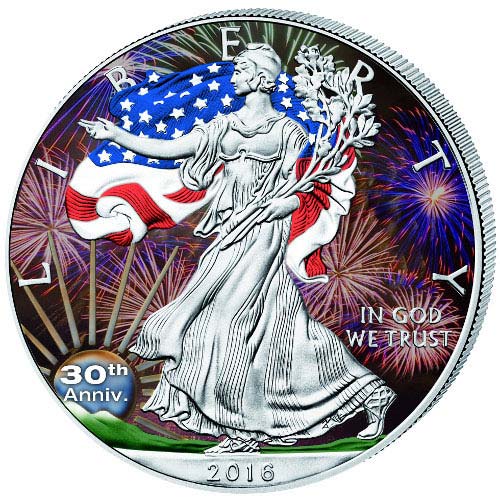
-
On 5/27/2020 at 9:19 AM, Madisonpigeon said:
Ngc is horrible! I sent in liberty nickels costing me $35 apiece for grading and they take 1 quick look , don't even assign a grade! Just label uncirculated details altered color" my grandfather had these nickels in an old capital holder inside a velvet purple bag , this caused color over 50+ years! All of these nickels would grade ms67 as they are all superb! Now what are they worth?
Never send a coin to ngc again
Post some pictures. Let's see this 50+ year natural color on those MS67 gems.
-
On 5/22/2020 at 4:28 AM, MarkFeld said:
Greg, if such a coin (without documentation) has a special enough looking appearance, shouldn’t it have received the “Specimen” designation, when graded previously? I understand that grading is partly subjective and can be inconsistent, but I feel that companies should err on the side of extreme caution in awarding such designations.
In a perfect world, sure, but we don't know anything about the submission history of this coin. Maybe it was a standard submission listed as MS the first time. Maybe the second submission listed is as SP and included numerous outside opinions from experts in the field that the coin is not a regular business strike? I own two coins that were graded a minimum of twice at both NGC & PCGS and they came back MS every time. No proofs were ever minted. Today they both reside in SP holders after I got an expert to state they they were not normal business strikes. And I dare anyone to say they are not special.
Maybe the first time the dime was graded every grader except one said SP and NGC erred on the side of caution? Maybe the second time they decided to go with the majority of graders?
Maybe this dime was first graded when NGC stuck to the MS or PF designations? I don't know this for a fact, but I sure saw a lot of PCGS SP coins before NGC, so maybe NGC was slow to use SP designations?
FYI, I'm not defending the SP status of this coin in particular.
-
On 5/21/2020 at 2:00 PM, RWB said:
To satisfy a clear, discrete meaning for "specimen" there MUST be documentation to support that contention. Hearsay, and "looks specimeny" are no good.
In most instances it is called “specimen” because the coins looks like something unusual or special was done, but there is no reliable documentation. It’s a way of saying the coin is “different but we don’t know what it was supposed to be.”
-
On 5/16/2020 at 10:49 AM, RWB said:
No "specimens" were made and there is no documentation to support that contention.
Since when does there need to be documentation? There is a long history of mints keeping "special looking" examples of coins.The term Specimen does not indicate a proof striking. It's used today to denote a coin that has a special appearance and likely special handling. If this coin looks nothing like a regular 1900-S, then the SP designation may very well be warranted.
And I own quite a few undeniable proof coins from various countries. Only problem is that according to the mints, they didn't make any proofs. Are they suddenly not proofs? I've also owned mint state examples of proof only issues.

-
2 hours ago, GoldFinger1969 said:
I'm curious....when NGC receives a bulk submission, how much time per coin do the graders spend on each coin ?
If the grader spots anything that takes it out of the 70 grade: 3 seconds.
If the grader is confirming the 70 grade: 5-8 seconds.
Whether it is 3 seconds or 8 seconds, the grader is hating their life.
- GoldFinger1969 and rrantique
-
 1
1
-
 1
1
-
Regardless of whether or not this coin is worth the asking price, one thing is very clear: It should have been sent to NCS first. The haze on it is unattractive, but looks to be easily removable.
-
Anyone know what this is? I assumed it was for a 1987 ANA convention in Mexico, but they were held in Atlanta and Charlotte that year.
Has the Mo mint mark, so it was struck by the Mexico City mint.
Under the mint mark is Laton 85/15 which apparently indicates that it is brass (85% copper and 15% zinc). I find it odd that they would list the composition as that is usually reserved for coins with gold or silver in them.
Weight is 4.4 grams.
It appears that the Mexico mint did issue special coins for the 1987 Atlanta ANA convention, but all I can find on them is they are silver onzas.
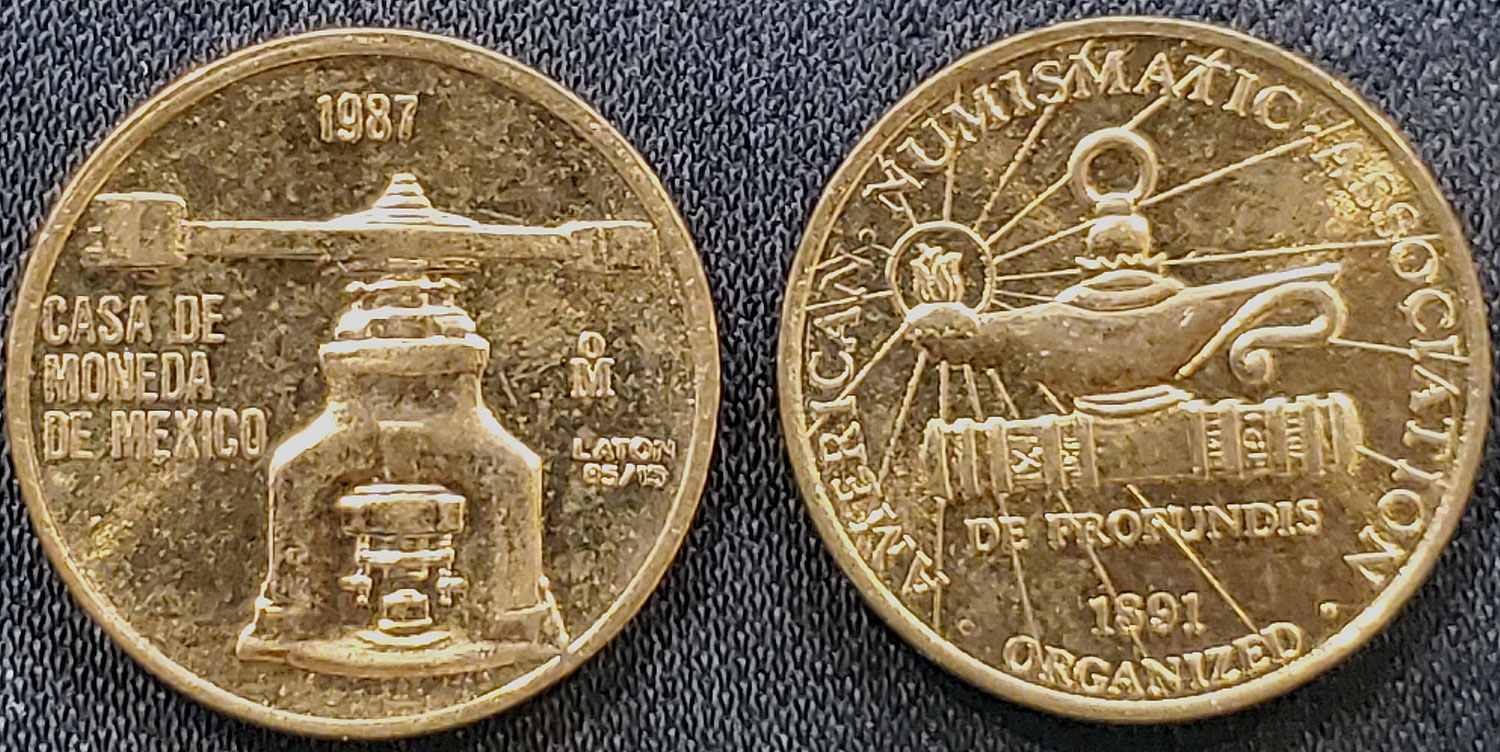
-
On 3/15/2020 at 3:59 PM, MK Ultra said:
I thought this was about the panama pill, which I'm looking to get one for my nephew.
Always a cool coin. Snagged this one a few years back. It's graded NGC MS66*.
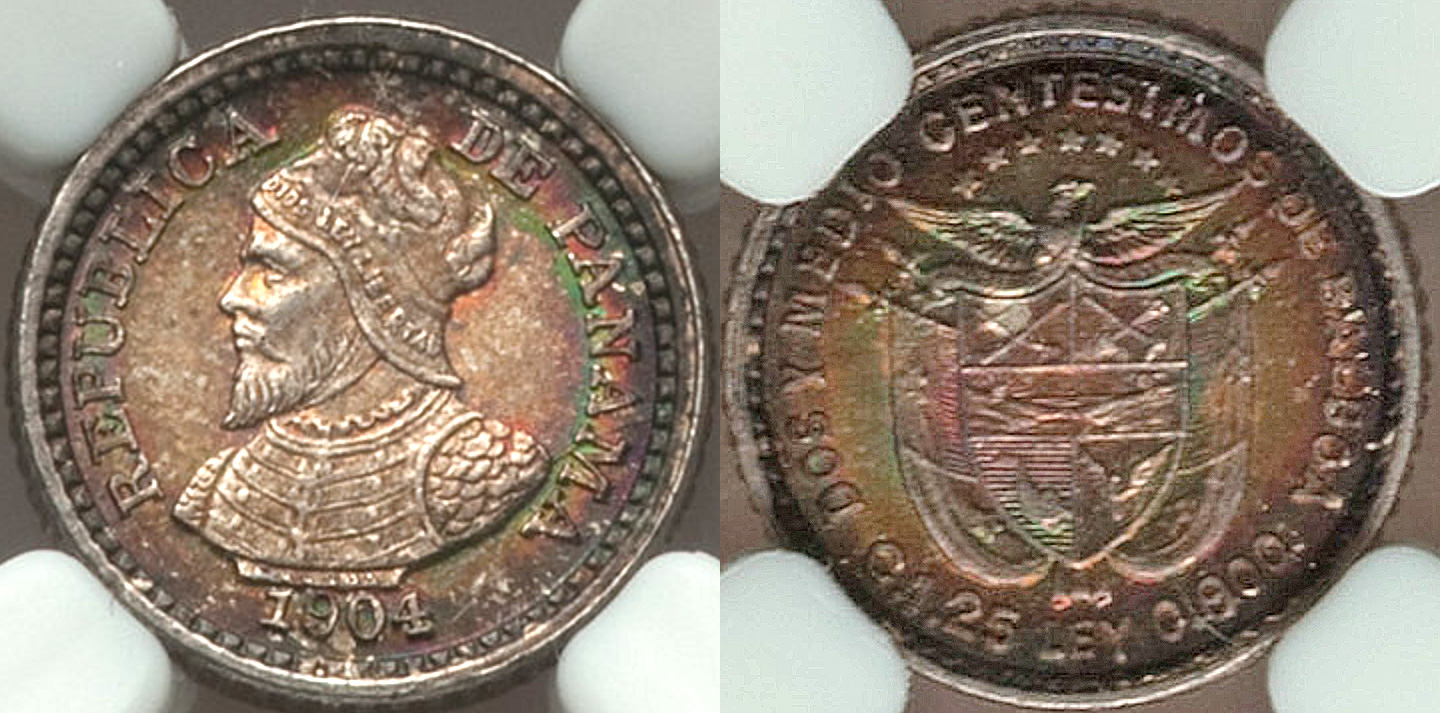
-
On 1/27/2020 at 9:54 AM, couponschevette said:
There is another large example of questionable toned Nickels that run from 1956-1964 in particlar. Bright neon colored proof coins. I have some featured on my registry if you would like to see examples of that
There is no question about these. We know who made them.
-
On 1/31/2020 at 5:18 PM, RWB said:
Collectors who learn to correctly examine and grade coins have no need of a "pre-grading" screening or any other kind of screen -- except maybe a TV screen for the "kind-a super bowl."
While I agree 100% that collectors should learn how to grade, the fact is that most dealers aren't even that good at grading. Few can split the 60-70 grades accurately. Asking collectors to learn how to do this is just wishful thinking.
As for pre-grading, I'm sure at least one of the TPG offered this MANY years ago. It was not pre-screening/bulk, but rather an actual grade assigned to a coin and for an additional fee you could send it back and have it put in a slab.
-
- Popular Post
- Popular Post
Haven't added too much to my core collection in a while, but when these were offered for sale a little while ago I jumped on them. Not very often that gem 17th century Talers become available.
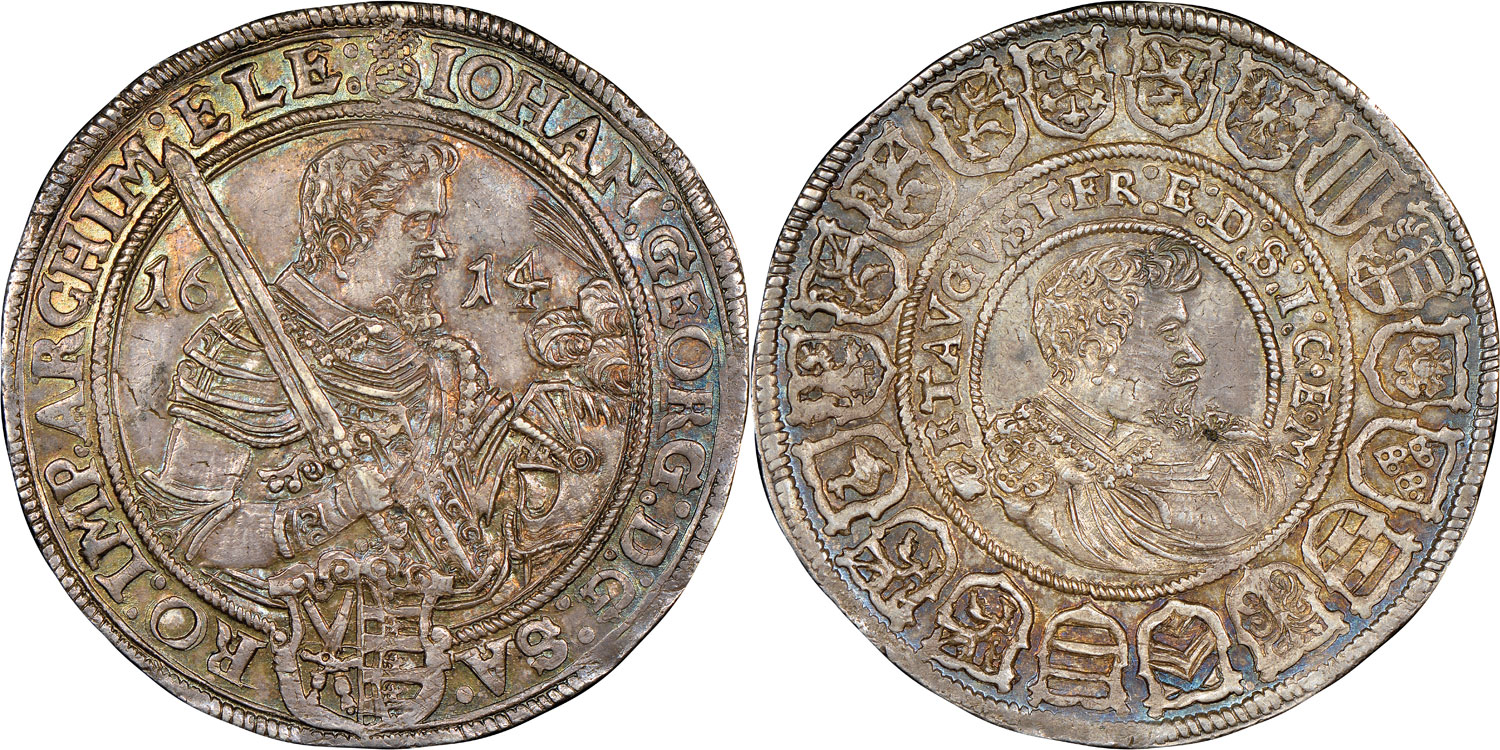
1614 Germany Saxony Johann Georg I and August Taler Dav-7573 in NGC MS65
Super rare condition for this type. It's by far the top pop at NGC/PCGS. For type, the next highest graded are MS63 (PCGS) and MS61 (NGC). Heritage auctioned an MS61 last year that they described as having a handful of minor flan imperfections, yet they stated that "Without a doubt the nicest example of the type that we have handled, and a type that rarely comes so nice at all...". This is just plain rare in nice condition.
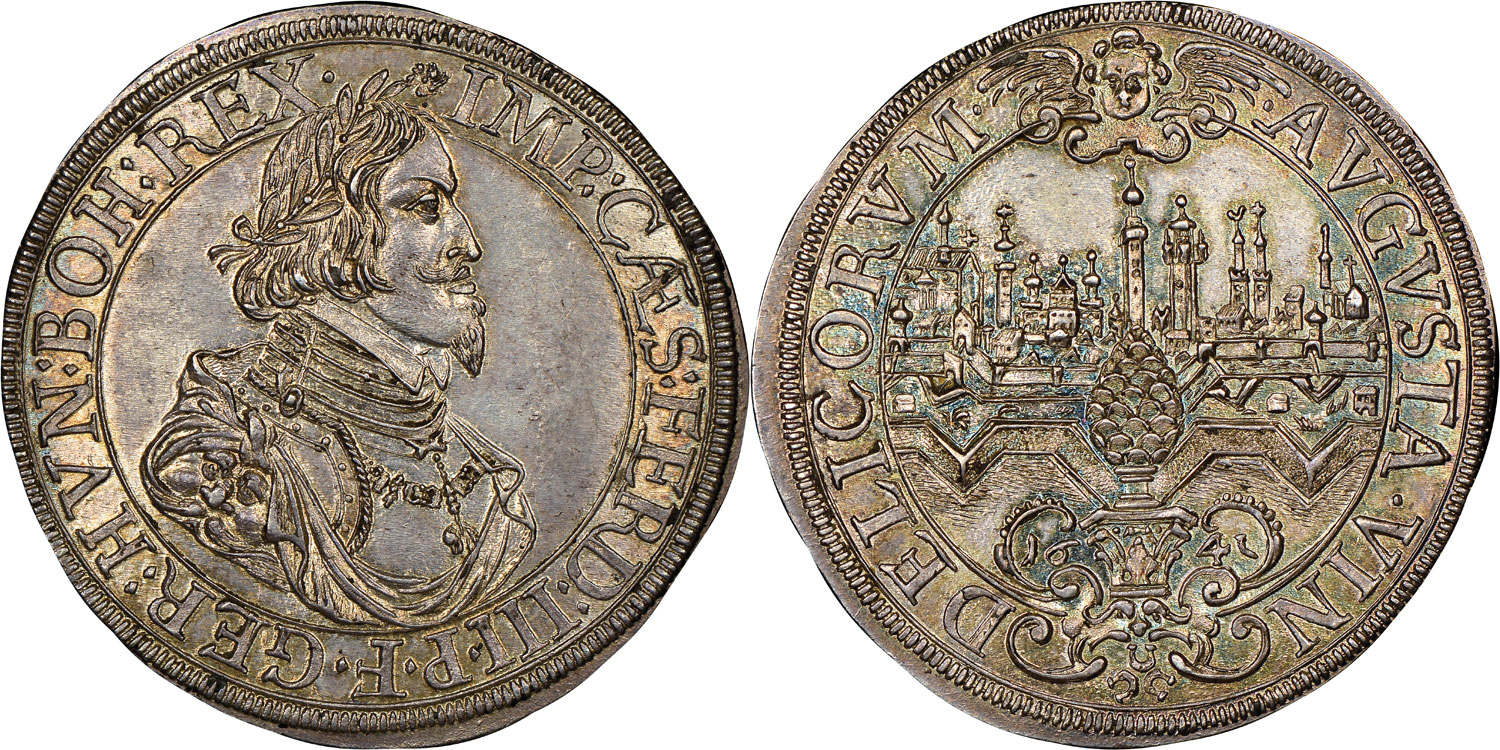
1641 Germany Augsburg Ferdinand III and City View Taler Dav-5039 in NGC MS65+
Not nearly as rare as the Saxony Taler, but still an awesome design in extremely high grade. There is an MS66 (NGC) and a couple of MS65 (PCGS). There are also a small hoard of them that came on the market around 10 years ago in gem condition, but they don't seem to have made it into the US TPG. Probably mostly still in European hands.
-
On 12/20/2019 at 6:07 AM, thebeav said:
Ancient thread alert !!
Who the hell are these old time members? Never heard of any of them before.
-
Picked this up raw at the NYINC show. Just mind blowing condition for this type coin. These heavily circulated and to find one in this condition, fully prooflike, on a well rounded and not cracked planchet is amazing. Very likely the finest Venetian 1/2 Scudo in existence.
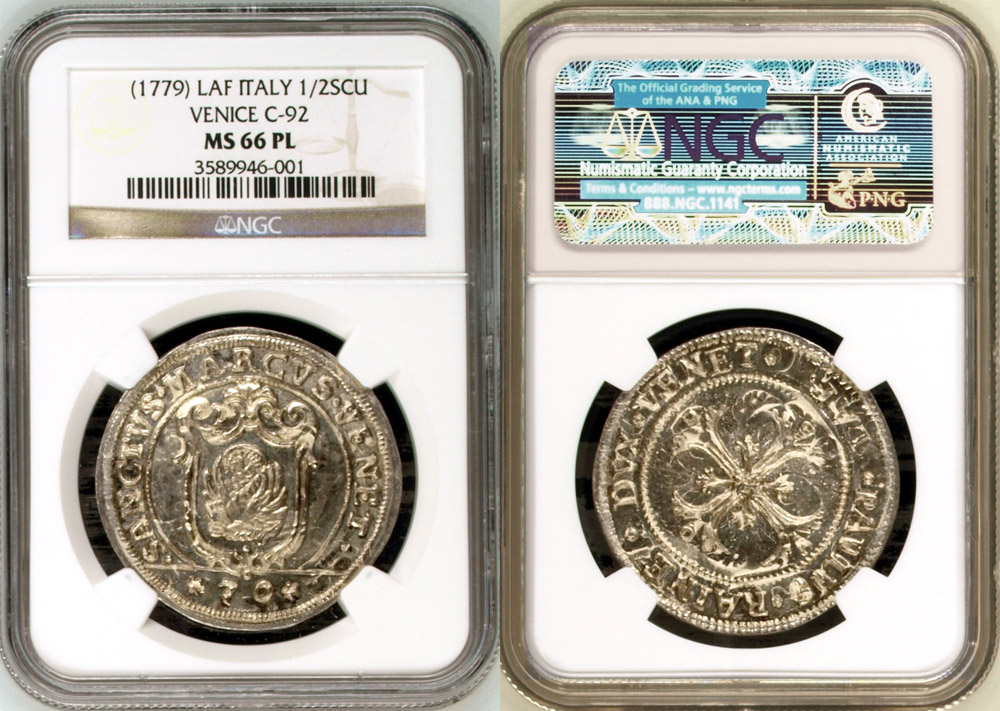
-

Sell me that Mining Taler. It's the right thing to do. Take my money and buy something nice for your wife.
EVP
Who are you? Your user name isn't familiar. Are you some comic book fanboy that got lost over in the wrong forum?
-
OK, it's foreign and I posted it in the world coin section, but too bad, I'll post it here too.
Just picked this 1700 Germany (Stolberg) Mining Taler at the recently completed CICF show:
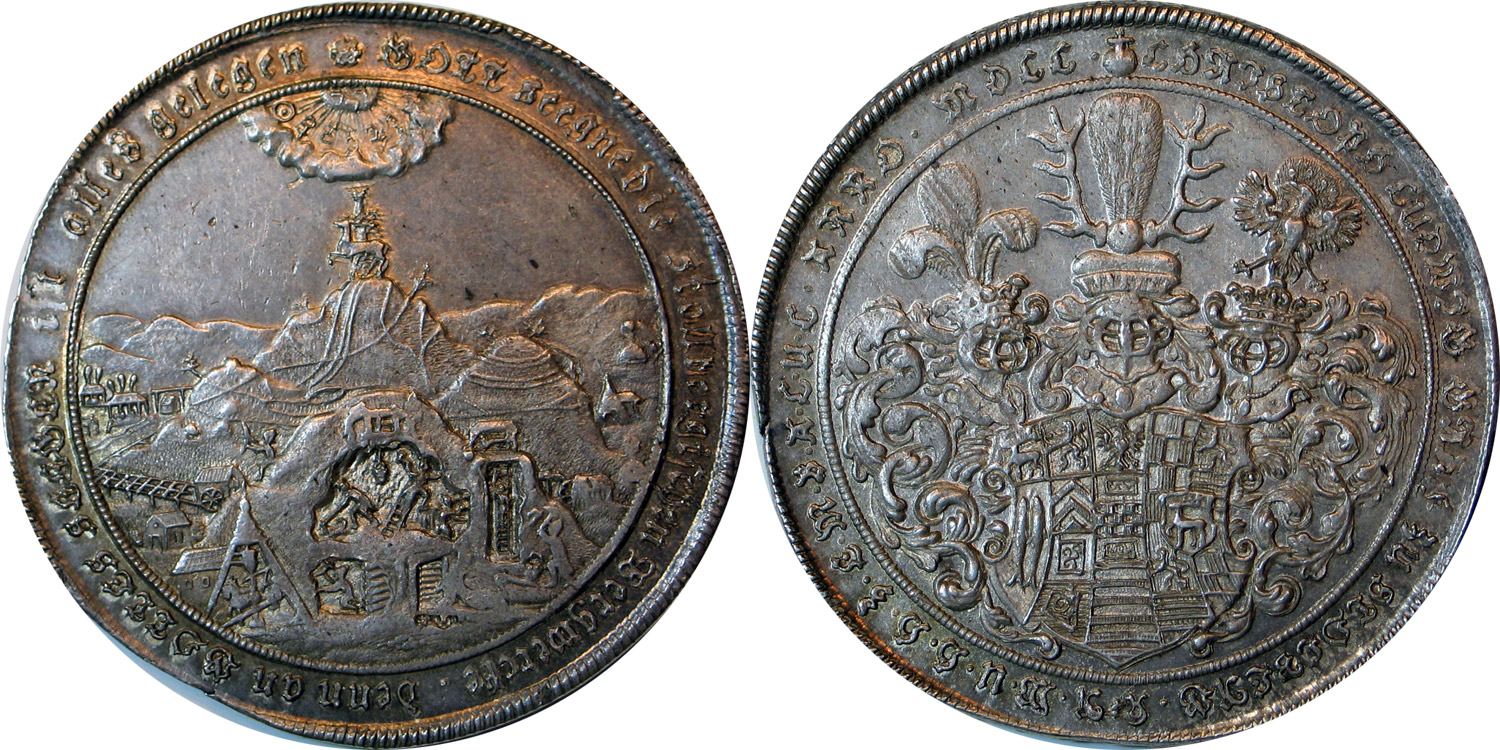
The view of the miners inside the mine was what sold me on the coin. Just a wonderful and unusual design.
-
Just picked this 1700 Germany (Stolberg) Mining Taler at the recently completed CICF show:

The view of the miners inside the mine was what sold me on the coin. Just a wonderful and unusual design.
-
It's minted in silver.
-
Recently picked this up for my collection. It's a Siege Coinage from 1713 German (Landau) 1 Florin 4 Kreuzer. I find unusual stuff like this oddly attractive. It's about the size of a US half dollar.
From (paragraph, not the coin) the 2007 CNG Triton auction:
During the War of the Spanish Succession (1701-1714), France fought against the forces of the Austrian Habsburgs to protect its claims on Spanish lands after the death of the Spanish king Charles II. Several nations, including England and the United Netherlands, joined Austria against the powerful French forces. Landau, a fortified town located in modern southwest Germany, was besieged by one of the most prominent figures of the war, Claude Louis Hector de Villars, Marshal General of France. Duke Carl Alexander of Württemburg defended the town, which fell to the French on 20 August 1713. Soon after, Villars himself negotiated the Treaty of Rastatt, ending hostilities between King Louis XIV of France and Holy Roman Emperor Charles VI of Austria. A series of klippes was produced by Landau during the French siege, likely cut from the silver plate of the town’s rich citizens.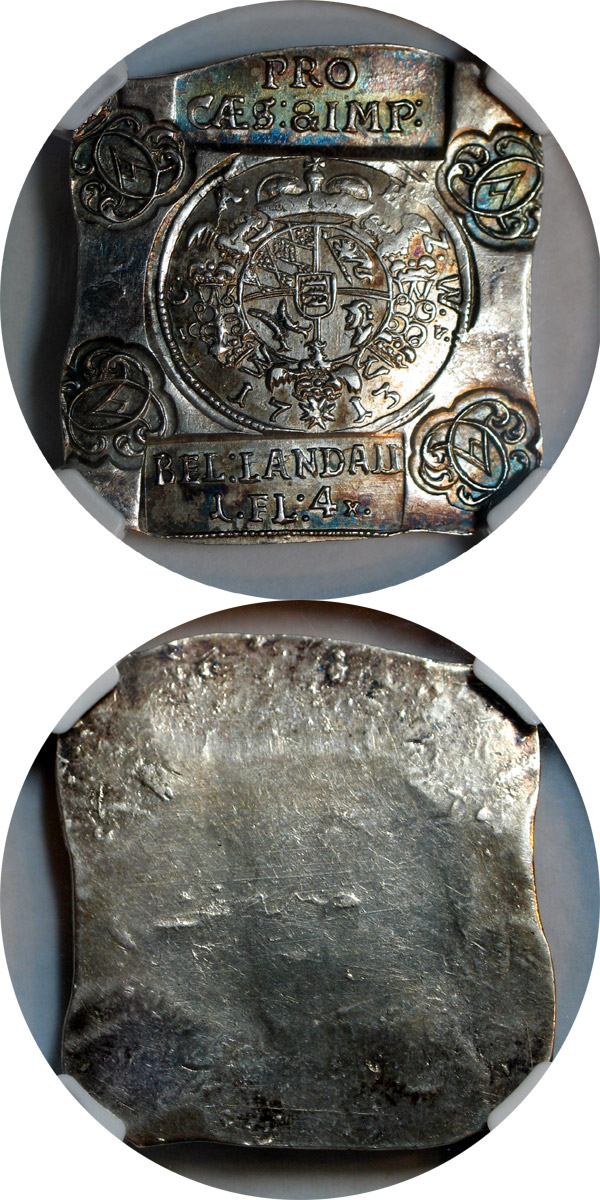
-
I heard a rumor the bags actually came from Russia and the story was just that - a story. But that's just a rumor. I don't see why it would matter much.
A made-up story being attached to a hoard of coins? I just can't believe that would ever happen.

-
A few of my recent pick ups from the NYINC show last month.
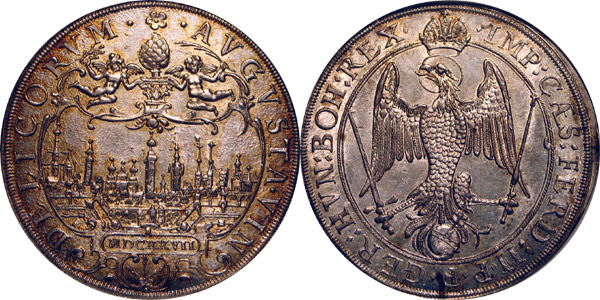
1627 Germany (Augsburg) Taler. Davenport 5026. NGC MS63 (which was harsh). The picture doesn't show it, but the coin is highly lustrous with some nice light golden toning.
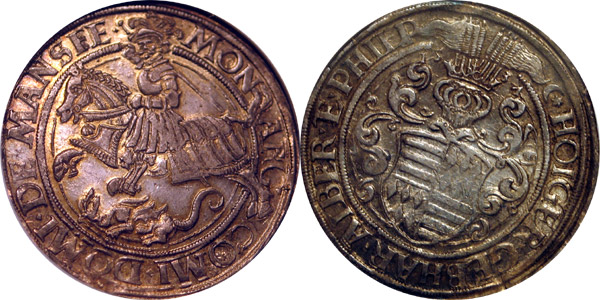
1531 Germany (Mansfield) Taler. Davenport 9479. NGC AU58. Very nice strike for the type with wonderful detail on the face, horse, and dragon. Appears to have been quadruple struck.
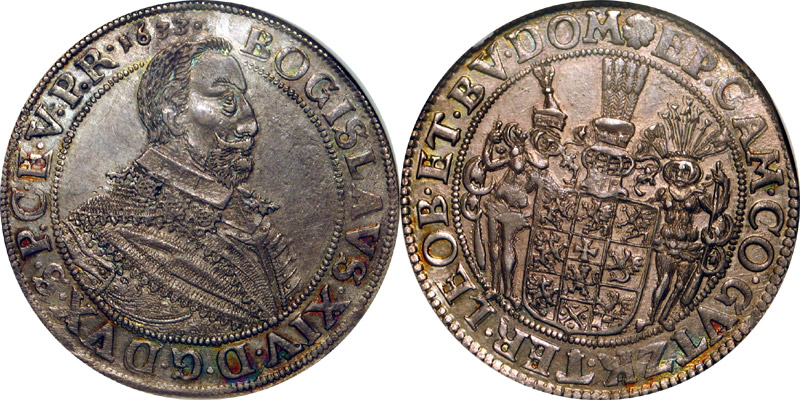
1633 Germany (Pomerania) Taler. Davenport 7282A. NGC AU58. A very rare coin which does not frequently come up for sale.
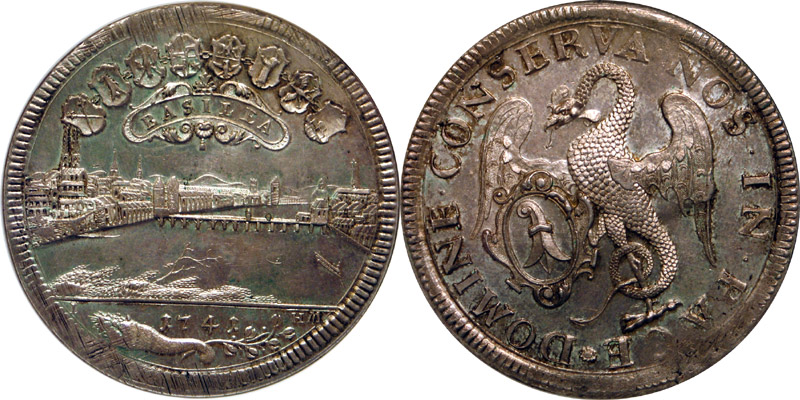
1741 Switzerland (Basel) Double Taler. Davenport 1749. NGC MS63. Very nice luster and strike. Adjustment marks are basically limited to the rims which is nice as they frequently come running thru large portions of the design.

1711-1740 Austria (Hall) Double Taler. Davenport 1049. NGC AU58. Mintage of only 834. While coin is technically accurately graded, no one would complain if it were in an MS63 slab.
-
Sorry, you`ll have to find out on your own. I`m not getting sued, Thank you.
Then what you're saying is that you have no real idea, but have heard a rumor. You aren't going to get sued for posting the facts about what happened - especially when these facts are public knowledge according to you.




SHOULD I CLEAN THIS COIN?
in US, World, and Ancient Coins
Posted
I'm 99% certain you're trolling. I also highly doubt that all that was done was a 10 minute soak in olive oil and MS70. Olive oil is not reactive enough to change the surfaces in 10 minutes. You'd have needed to do some serious rubbing with MS70 to get all the color off.
There are ways to lessen or remove those dark areas without harming the originality of the coin.